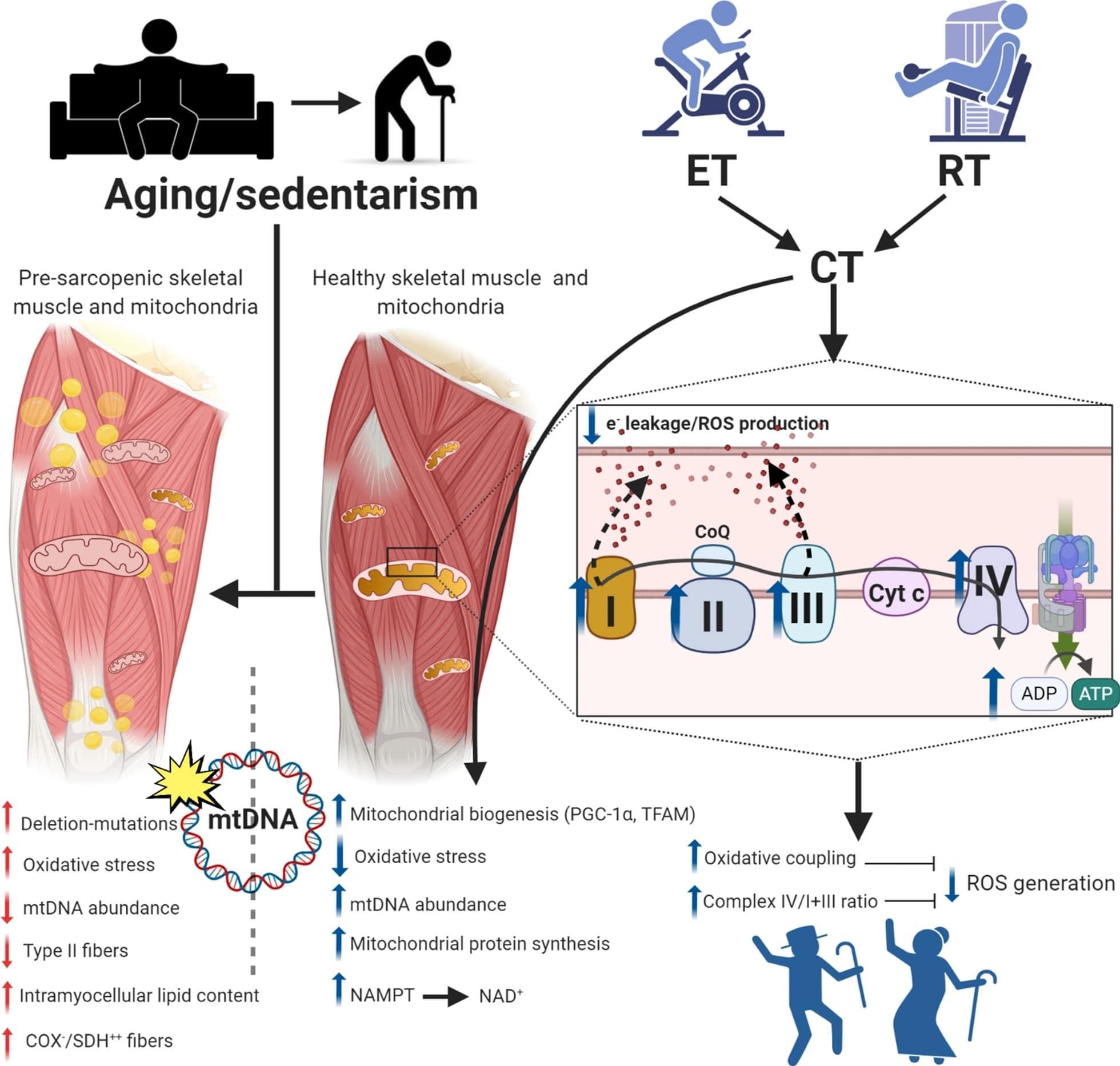Parallel training combining aerobic and strength exercises has been shown to protect mitochondria and prevent muscle loss. According to scientist Denham Harman’s theory, aging is associated with the action of aggressive oxygen radicals and the accumulation of damage to proteins, lipids, and DNA in living tissues. Such damage can disrupt the normal functioning of mitochondria, which produce adenosine triphosphate (ATP), leading to energy deficiency. Studies on older individuals have confirmed age-related declines in aerobic capacity, suggesting that impaired mitochondrial function or muscle loss may be the main mechanisms. Indeed, skeletal muscle mitochondria undergo several changes with age, including increased mitochondrial DNA (mtDNA) loss, decreased enzyme activity and mtDNA content, and increased oxidative stress. Some studies propose that the exacerbation of sedentary behavior, which often accompanies aging, is a greater cause of reduced muscle function than aging itself.
Aging of skeletal muscles is associated with impaired motor function and loss of muscle mass (sarcopenia). The underlying mechanisms of this pathology involve impaired energy production in skeletal muscles either due to age-related decline in mitochondrial function or their underutilization. Lifelong training cannot completely reverse dysfunction but is an effective means of preserving the energetic properties of skeletal muscles, thereby delaying the onset of sarcopenia. The key factor in this process is the efficiency of mitochondria—ATP production relative to O2 consumption in muscle cells. Such efficiency forms the basis of age-related decline in skeletal muscle function.
In a review published in the Journal of Translational Medicine, the mechanisms contributing to age-related decline in muscle function and how exercise prevents these processes are described.
The main conclusion drawn by the authors of this review is that endurance training with moderate to high intensity (including interval training) combined with strength training (moderate-heavy intensity) is a quality strategy for preventing molecular signs of skeletal muscle aging, restoring mitochondrial “respiration” efficiency, reducing chronic formation of aggressive oxygen radicals/mtDNA damage, and redirecting mitochondria towards a more “youthful” state. At the organism level, this effectively prevents sarcopenia, preserving muscle function and strength, and improving metabolic health.
Conclusion:
The review highlights the importance of exercise in preserving muscle function and mitochondrial health, particularly in the context of aging. By combining aerobic and strength training, individuals can benefit from the following:
Protection of mitochondria: Parallel training helps safeguard the normal functioning of mitochondria, which play a crucial role in energy production.
Prevention of muscle loss: Age-related declines in muscle mass (sarcopenia) can be delayed through regular exercise routines.
Improvement in muscle recovery: Exercise, especially endurance training, aids in the recovery of muscles and reduces post-workout soreness.
Maintenance of muscle strength: Lifelong training is an effective method for preserving muscle strength and combating age-related decline.
Restoration of mitochondrial efficiency: Exercise interventions contribute to the restoration of efficient ATP production and oxygen utilization in muscle cells.
Reduction in oxidative stress: Physical activity helps mitigate oxidative stress and DNA damage in mitochondria, promoting a more “youthful” mitochondrial profile.
Overall, incorporating a combination of aerobic and strength training exercises into one’s routine can serve as a valuable strategy to mitigate age-related molecular changes, enhance mitochondrial function, and preserve muscle health and performance.

